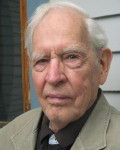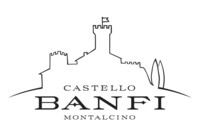 |
 |
||||||||||||||||||||||||||||||||||||
 |
|||||||||||||||||||||||||||||||||||||
| The Face on the Barroom Floor | |||||||||||||||||||||||||||||||||||||
| Opera in 1 Act | |||||||||||||||||||||||||||||||||||||
| Music by Henry Mollicone | |||||||||||||||||||||||||||||||||||||
| Libretto by John S. Bowman | |||||||||||||||||||||||||||||||||||||
| Synopsis | |||||||||||||||||||||||||||||||||||||
Commissioned by the Central City Opera in 1978 and produced there each year since its premiere in '78; also produced annually at the Utah Opera Festival in Logan Utah; it is constantly in production by various American opera companies and universities, and has also been produced in the Netherlands, Scotland, and Germany. Available on New World Records (formerly a CRI recording.) The opera tells two tales, separated in time but parallel in characters and theme. In present day Central City, CO, Isabel, a member of the opera chorus, and her friend Larry visit the Teller House bar. Larry orders champagne and asks about the face painted on the floor. Tom, the bartender, tells the story, which is enacted as he becomes a 19th century bartender named John, who welcomes the bargirl Madeline (played by Isabel) as they toast to the future. A disheveled traveler, Matt (played by Larry), enters and orders drinks for all while Madeline is asked to sing. Unable to pay for the drinks, Matt offers instead to paint a portrait on the barroom floor of the only woman he ever loved. John discovers the portrait is of Madeline. The two men fight until Madeline throws herself between them, with tragic consequences. Larry, now back in the twentieth century, laughs drunkenly at the old legend and forces Isabel to dance with him. Tom now reveals his past romantic relationship with Isabel, and challenges Larry. Events in the past repeat themselves in the present, continuing the legend of the face on the barroom floor. |
|||||||||||||||||||||||||||||||||||||
| More info on " The Face" from the composer - When commissioning us, Central City asked us to find a local subject. Librettist John S. Bowman did research and sent me several ideas. The Face idea appealed to me, as I liked the idea of Central City actually having a bar with the actual Face painted on the floor! Also, as we devised a plot much different from the poem, we made it compact and wanted to include conflict and drama (the soprano get's killed twice- once in the present, and once in a flashback!), and lyricism (there is a love triangle in the opera). We chose to use only 3 vocalists, and this gave us the opportunity to write ensembles. As they decided to present the opera annually for 33 seasons, we feel very lucky with this work. | |||||||||||||||||||||||||||||||||||||
| reviews have said: | |||||||||||||||||||||||||||||||||||||
| “As a drama, �?/span>The Face on the Barroom Floor �?is predictable but strangely powerful; the audience is gripped. I found it even more gripping a second time round. It is a very skillful score... It's a good piece." - Andrew Porter of The New Yorker | |||||||||||||||||||||||||||||||||||||
| Background information about The Face on the Barroom Floor painting | |||||||||||||||||||||||||||||||||||||
| Origin of The_Face_upon_the_Barroom_Floor Poem | |||||||||||||||||||||||||||||||||||||
| More on Composer Henry Mollicone | |||||||||||||||||||||||||||||||||||||
| Emperor Norton by Henry Mollicone | |||||||||||||||||||||||||||||||||||||
| reviewers have said: | |||||||||||||||||||||||||||||||||||||
| “Norton is more recent than Barroom and seems to show substantial growth in Mollicone's mastery of the difficult form of one-act opera. Its emotions, ranging from near-slapstick comedy to pathos, are good raw material for his eclectic, easily accessible style..." wrote Joseph McLellan of The Washington Post. “It is expressively and even beautifully written for the voice and the ensembles are cohesive, soaring affairs" wrote Allan Ulrich of the San Francisco Examiner. | |||||||||||||||||||||||||||||||||||||
| Emperor Norton | |||||||||||||||||||||||||||||||||||||
| Emperor Norton Historical Figure - Notes from San Francisco �?California Historical Society | |||||||||||||||||||||||||||||||||||||
| Emperor Norton’s Archives | |||||||||||||||||||||||||||||||||||||
| San Francisco Museum page on Joshua Norton | |||||||||||||||||||||||||||||||||||||
| American History Magazine Article on Emperor Norton | |||||||||||||||||||||||||||||||||||||
| Video of Historic San Francisco 1906 | |||||||||||||||||||||||||||||||||||||
| More info on "Emperor Norton" - San Francisco Opera General Director Kurt Herbert Adler saw "The Face" in Central City, and decided he wanted to commission another chamber opera based on a San Francisco subject. He chose the subject- "Emperor Norton", who was a famous real life street character in the late 19th century. I decided to collaborate with John Bowman again, but we had a problem: how to write an opera about a character who had so many interesting incidents in his life, but there was not much conflict or any ongoing story. Finally, Bowman had the idea of doing an opera that starts in the present as Marla, a playwright, is writing a play on Norton's life. Suddenly when running scenes, a strange character appears, dressed like Norton used to dress. (Is he Norton coming back from the hereafter? Nobody seems to know- except the audience, who seems to get the point.) He comes back to "set the record straight" in a series of scenes from his life, scenes which we were able to put together with a dramatic flow, making it into a kind of struggle between the playwright and Norton. So we actually have an opera that is unusual in that the leads are baritone and mezzo soprano. | |||||||||||||||||||||||||||||||||||||
 |
|||||||||||||||||||||||||||||||||||||
| John S. Bowman - Librettist | |||||||||||||||||||||||||||||||||||||
John S. Bowman has had a career as an editor and writer on a wide range of subjects. Like many of his generation , he came to opera by way of the Saturday afternoon broadcasts of the Metropolitan Opera. He co-translated his first opera libretto for the Lowell House Music Society at Harvard and went on to co-translate one libretto and translate/adapt another for operas he produced for Special Services while serving in the US Army in Germany. (He has described this experience in his recently published, Pergolesi in the Pentagon, available on Amazon Books and Kindle.) After being introduced to Henry Mollicone in 1969, he wrote the libretto for Mollicone’s first opera, Young Goodman Brown, based on Hawthorne’s story. When Mollicone was commissioned in 1977 to write an opera for the Central City Opera in Colorado, he again turned to Bowman, who came up with an original libretto for The Face on the Barroom Floor—only loosely inspired by that 19 th-century poem. And when the San Francisco Opera commissioned Mollicone in 1981 to compose an opera based on some local subject, Bowman devised a libretto based on San Francisco’s legendary 19 th-century eccentric, Emperor Norton. |
|||||||||||||||||||||||||||||||||||||
|
|||||||||||||||||||||||||||||||||||||
|
|||||||||||||||||||||||||||||||||||||





